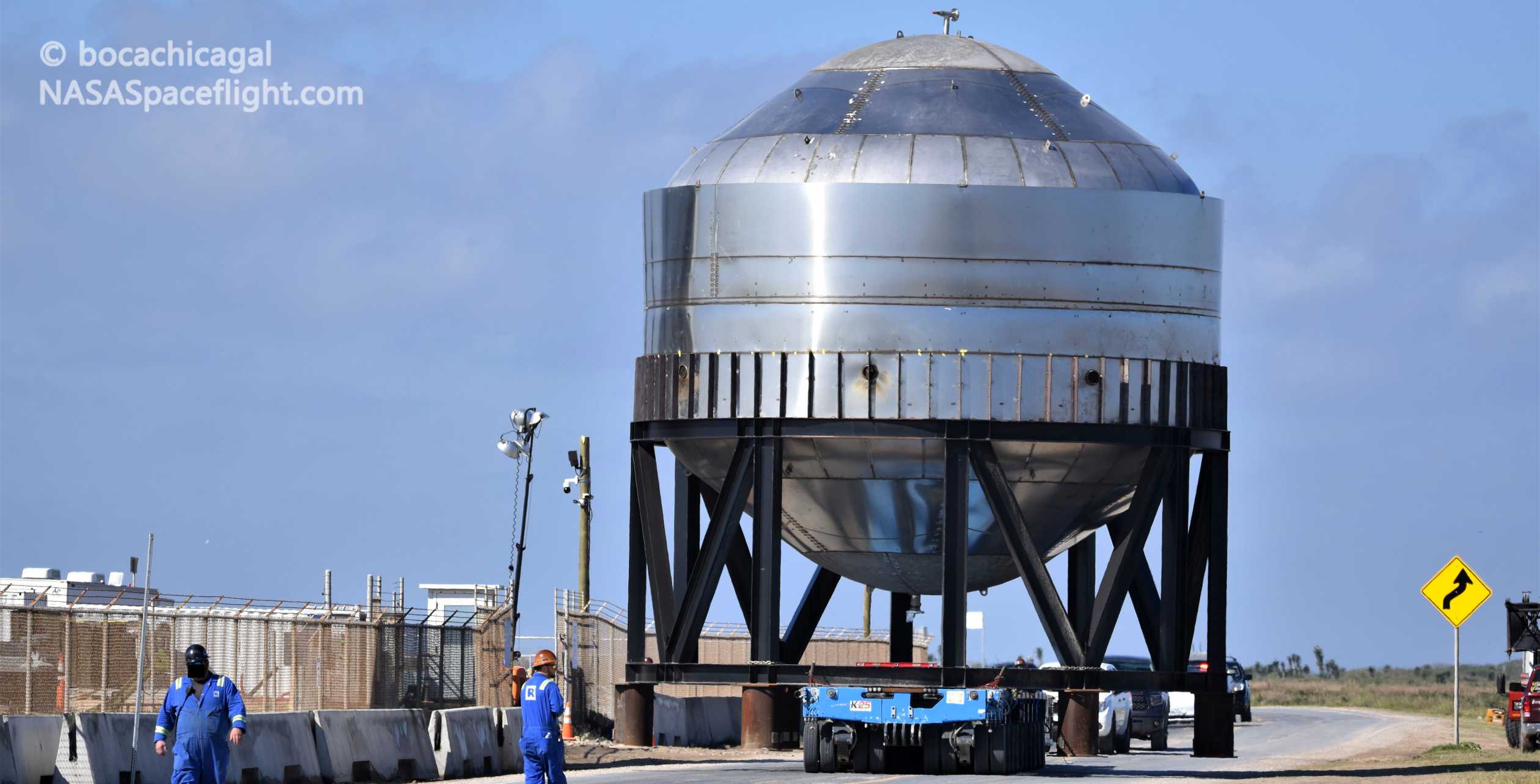
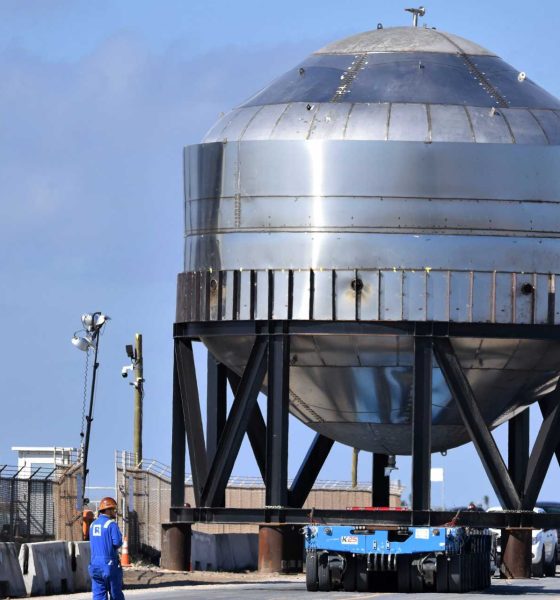
News
SpaceX is ready to build the first Starship destined for space after latest tests
After a busy several days of rocket hardware testing, Elon Musk says that SpaceX may be ready to build the first Starship prototype destined for space.
According to Musk, one test in particular – performed in South Texas just yesterday – is an encouraging sign that SpaceX’s Starship team is becoming increasingly competent at building the massive steel parts that will ultimately make up the generation launch vehicle. For SpaceX, the particular skills and expertise needed to precisely and consistently build a launch vehicle – let alone a rocket as large and complex as Starship – are quite a bit different from those it has mastered with Falcon 9, Falcon Heavy, and Dragon.
A lot of the expertise – particularly engineering talent, countless lessons-learned, and insight into reusability – is directly transferable from Falcon rockets to SpaceX’s Starship/Super Heavy program. Where it really isn’t transferable, however, is in the methods required to actually build the steel subcomponents that must ultimately be assembled together to form the rocket’s upper stage and booster. As a result, SpaceX has spent more than a year focused on building, testing, scrapping, improving, and re-testing any number of critical Starship components. Over the last four weeks (and last few days in particular), that testing has come to a head and Elon Musk believes the results have opened the door for SpaceX to begin building its first space-bound Starship prototypes.
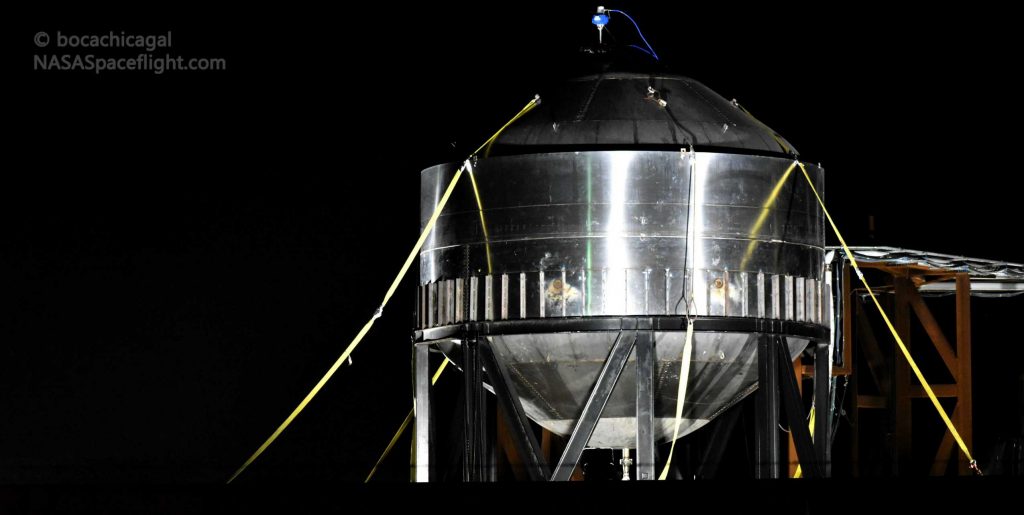
SpaceX’s latest round of full-scale Starship hardware tests began just 10-20 days ago, depending on how one counts. Back around the start of the new calendar year, SpaceX began rapidly integrating two new Starship bulkheads and two cylindrical steel rings (barrel sections), ultimately delivering a finished ‘test tank’ after just 20 days of work. On January 10th, scarcely 24 hours after the two halves of the test tank were welded together, SpaceX sent the Starship test tank to its nearby launch pad and pressurized it with water until it quite literally burst.
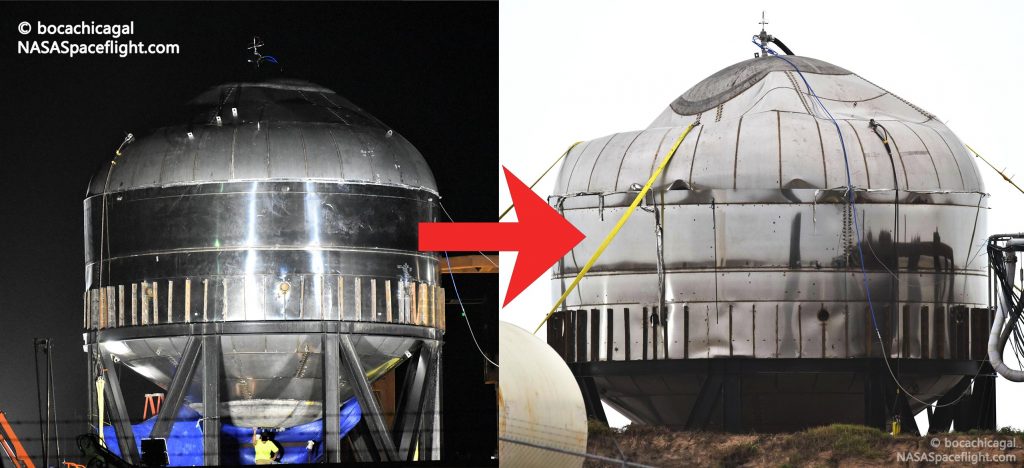
Musk tweeted the results of that intentional test-to-destruction just a few hours after it was completed, revealing that SpaceX’s upgraded production and integration techniques enabled the tank to survive pressures almost 20% greater than the minimum Starships will need to perform orbital launches.
“Critically, the tank reached a maximum sustained pressure of 7.1 bar (103 psi), 18% more than the operating pressure (6 bar/87 psi) Musk says Starship prototypes will need to begin orbital test flights. At 7.1 bar, the test tank would have been experiencing an incredible ~20,000 metric tons (45 million lbf) of force spread out over its interior surfaces — equivalent to ~20% of the weight of an entire US Navy aircraft carrier. Perhaps even more impressive, that same Starship test tank was built from almost nothing extremely quickly, going from first weld to said pressurization test in just three weeks (20 days).
With relatively minor improvements to welding conditions and the manufacturing precision of Starship rings and domes, Musk believes that SpaceX can reliably build Starships and Super Heavy boosters to survive pressures greater than 8.5 bar (125 psi), guaranteeing a safety margin of at least 40%. Even a minor improvement of ~6% would give Starship a safety margin of 125%, enough – in the eyes of most engineering standards committees – to reasonably certify Starships for orbital test flights.”
Teslarati.com — January 12th, 2020
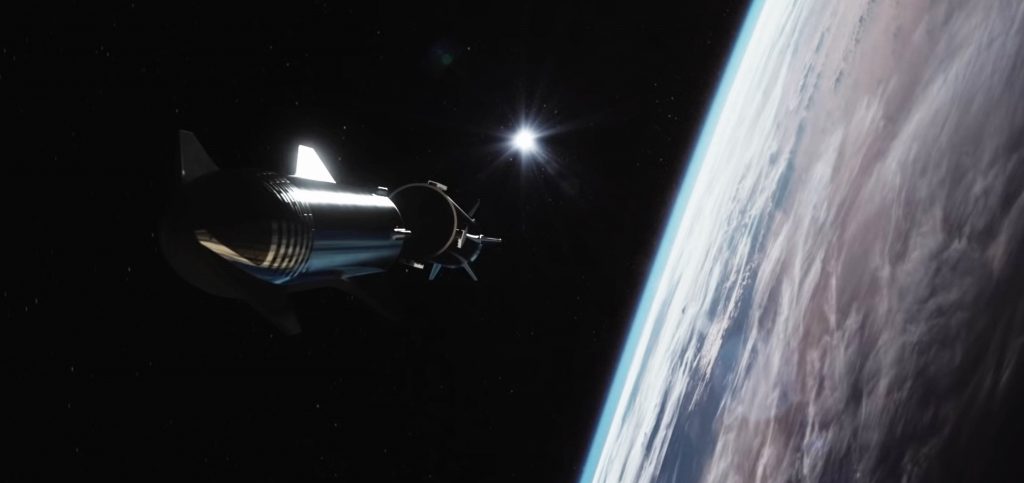
Test Tank 2: The Tankening
This brings us to January 27th, a little over two weeks after SpaceX completed and burst the first standalone Starship test tank. Over the last week, SpaceX has quickly assembled a second Starship test tank, using a few clearly new methods and parts, as well as a brand-new tent built by the same company that Tesla used for Fremont’s fourth General Assembly line.
In the last few days, two new bulkheads and steel rings came together to form Starship test tank #2, which was subsequently prepped for transport and moved about a mile down the road to SpaceX’s launch facilities on the morning of January 27th. Scarcely a few hours later, well before anyone was paying close attention for test activities, Elon Musk took to Twitter to reveal that the second tank had already been subjected to a pressure test with water. That second tank reportedly survived up to 7.5 bar, an improvement of about 6% compared to the first tank.
This time, however, the tank wasn’t actually catastrophically destroyed by the pressure test, instead developing a leak around the weld connecting the two halves that lead SpaceX to back off. Musk says that that presumably small leak will now be repaired, after which the same tank will be tested again but with one significant difference. Musk says that Test Tank #2’s second pressure test will be performed with a cryogenic liquid — most likely liquid nitrogen (LN2).

In replies after his reveal, Musk noted that he believed the second test tank could perform significantly better if pressurized with a cryogenic liquid. That’s because certain types of steel – particularly those SpaceX has chosen for Starship – exhibit something known as cryogenic hardening when exposed to extremely cold temperatures, producing steel that can be dramatically stronger by some measures.
Ultimately, as mentioned above, a tank pressure safety margin of 125% is the minimum most engineering standards provide for any given orbital-class launch vehicle. At 7.5 bar, even under the very unlikely assumption that Starship tanks will not see even a marginal strength increase at cryogenic temperatures, SpaceX’s second Starship test tank has officially hit that 125% safety margin. As Musk himself noted on Monday, he is now confident that SpaceX can immediately start building the first Starship destined for spaceflight and further revealed that two of that particular Starship’s three tank domes are already nearing completion.
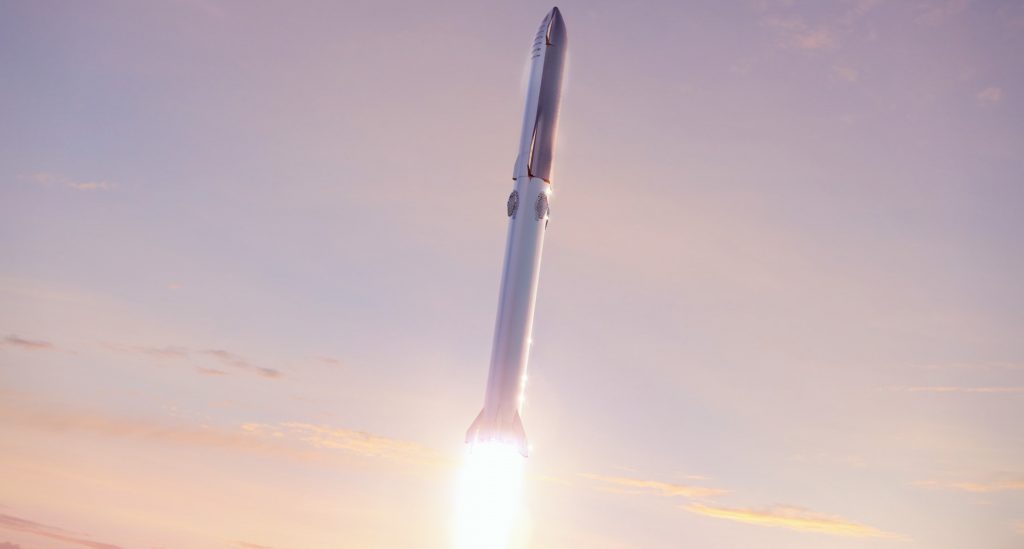
Known as Starship SN01 (serial number 01), there’s a strong possibility that the massive spacecraft will never reach higher than a 20 km (12.5 mi) flight test SpaceX intends to perform. The company’s rapidly changing strategy may very well mean that SN01 – now ‘go’ for production – could also support suborbital spaceflight testing and maybe even the first orbital Starship launch, although orbital launches will require a Super Heavy booster. Elon Musk, for one, has already christened Starship SN01 an “orbital vehicle”.
Check out Teslarati’s Marketplace! We offer Tesla accessories, including for the Tesla Cybertruck and Tesla Model 3.

News
Tesla Cybercab tests are going on overdrive with production-ready units
Tesla is ramping its real-world tests of the Cybercab, with multiple sightings of the vehicle being reported across social media this week.

Tesla is ramping its real-world tests of the Cybercab, with multiple sightings of the autonomous two-seater being reported across social media this week. Based on videos of the vehicle that have been shared online, it appears that Cybercab tests are underway across multiple states.
Recent Cybercab sightings
Reports of Cybercab tests have ramped this week, with a vehicle that looked like a production-ready prototype being spotted at Apple’s Visitor Center in California. The vehicle in this sighting was interesting as it was equipped with a steering wheel. The vehicle also featured some changes to the design of its brake lights.
The Cybercab was also filmed testing at the Fremont factory’s test track, which also seemed to involve a vehicle that looked production-ready. This also seemed to be the case for a Cybercab that was spotted in Austin, Texas, which happened to be undergoing real-world tests. Overall, these sightings suggest that Cybercab testing is fully underway, and the vehicle is really moving towards production.
Production design all but finalized?
Recently, a near-production-ready Cybercab was showcased at Tesla’s Santana Row showroom in San Jose. The vehicle was equipped with frameless windows, dual windshield wipers, powered butterfly door struts, an extended front splitter, an updated lightbar, new wheel covers, and a license plate bracket. Interior updates include redesigned dash/door panels, refined seats with center cupholders, updated carpet, and what appeared to be improved legroom.
There seems to be a pretty good chance that the Cybercab’s design has been all but finalized, at least considering Elon Musk’s comments at the 2025 Annual Shareholder Meeting. During the event, Musk confirmed that the vehicle will enter production around April 2026, and its production targets will be quite ambitious.
News
Tesla gets a win in Sweden as union withdraws potentially “illegal” blockade
As per recent reports, the Vision union’s planned anti-Tesla action might have been illegal.

Swedish union Vision has withdrawn its sympathy blockade against Tesla’s planned service center and showroom in Kalmar. As per recent reports, the Vision union’s planned anti-Tesla action might have been illegal.
Vision’s decision to pull the blockade
Vision announced the blockade in early December, stating that it was targeting the administrative handling of Tesla’s facility permits in Kalmar municipality. The sympathy measure was expected to start Monday, but was formally withdrawn via documents sent to the Mediation Institute and Kalmar Municipality last week.
As noted in a Daggers Arbete report, plans for the strike were ultimately pulled after employer group SKR highlighted potential illegality under the Public Employment Act. Vision stressed its continued backing for the Swedish labor model, though Deputy negotiation manager Oskar Pettersson explained that the Vision union and IF Metall made the decision to cancel the planned strike together.
“We will not continue to challenge the regulations,” Petterson said. “The objection was of a technical nature. We made the assessment together with IF Metall that we were not in a position to challenge the legal assessment of whether we could take this particular action against Tesla. Therefore, we chose to revoke the notice itself.”
The SKR’s warning
Petterson also stated that SKR’s technical objection to the Vision union’s planned anti-Tesla strike framed the protest as an unauthorized act. “It was a legal assessment of the situation. Both for us and for IF Metall, it is important to be clear that we stand for the Swedish model. But we should not continue to challenge the regulations and risk getting judgments that lead nowhere in the application of the regulations,” he said.
Vision ultimately canceled its planned blockade against Tesla on December 9. With Vision’s withdrawal, few obstacles remain for Tesla’s long-planned Kalmar site. A foreign electrical firm completed work this fall, and Tesla’s Careers page currently lists a full-time service manager position based there, signaling an imminent opening.
News
Tesla Semi program Director teases major improvements

Tesla Semi Program Director Dan Priestly teased the major improvements to the all-electric Class 8 truck on Thursday night, following the company’s decision to overhaul the design earlier this year.
Priestley said he drove the Semi on Thursday, and the improvements appear to be welcomed by one of the minds behind the project. “Our customers are going to love it,” he concluded.
Just drove the redesigned Semi. Our customers are going to love it. https://t.co/KZ88sf1CDL
— Dan Priestley (@danWpriestley) December 19, 2025
The small detail does not seem like much, but it is coming from someone who has been involved in the development of the truck from A to Z. Priestley has been involved in the Semi program since November 2015 and has slowly worked his way through the ranks, and currently stands as the Director of the program.
Tesla Semi undergoes major redesign as dedicated factory preps for deliveries
Tesla made some major changes to the Semi design as it announced at the 2025 Annual Shareholder Meeting that it changed the look and design to welcome improvements in efficiency.
Initially, Tesla adopted the blade-like light bar for the Semi, similar to the one that is present on the Model Y Premium and the Cybertruck.
Additionally, there are some slight aesthetic changes to help with efficiency, including a redesigned bumper with improved aero channels, a smaller wraparound windshield, and a smoother roofline for better aero performance.
All of these changes came as the company’s Semi Factory, which is located on Gigafactory Nevada’s property, was finishing up construction in preparation for initial production phases, as Tesla is planning to ramp up manufacturing next year. CEO Elon Musk has said the Semi has attracted “ridiculous demand.”
The Semi has already gathered many large companies that have signed up to buy units, including Frito-Lay and PepsiCo., which have been helping Tesla test the vehicle in a pilot program to test range, efficiency, and other important metrics that will be a major selling point.
Tesla will be the Semi’s first user, though, and the truck will help solve some of the company’s logistics needs in the coming years.








